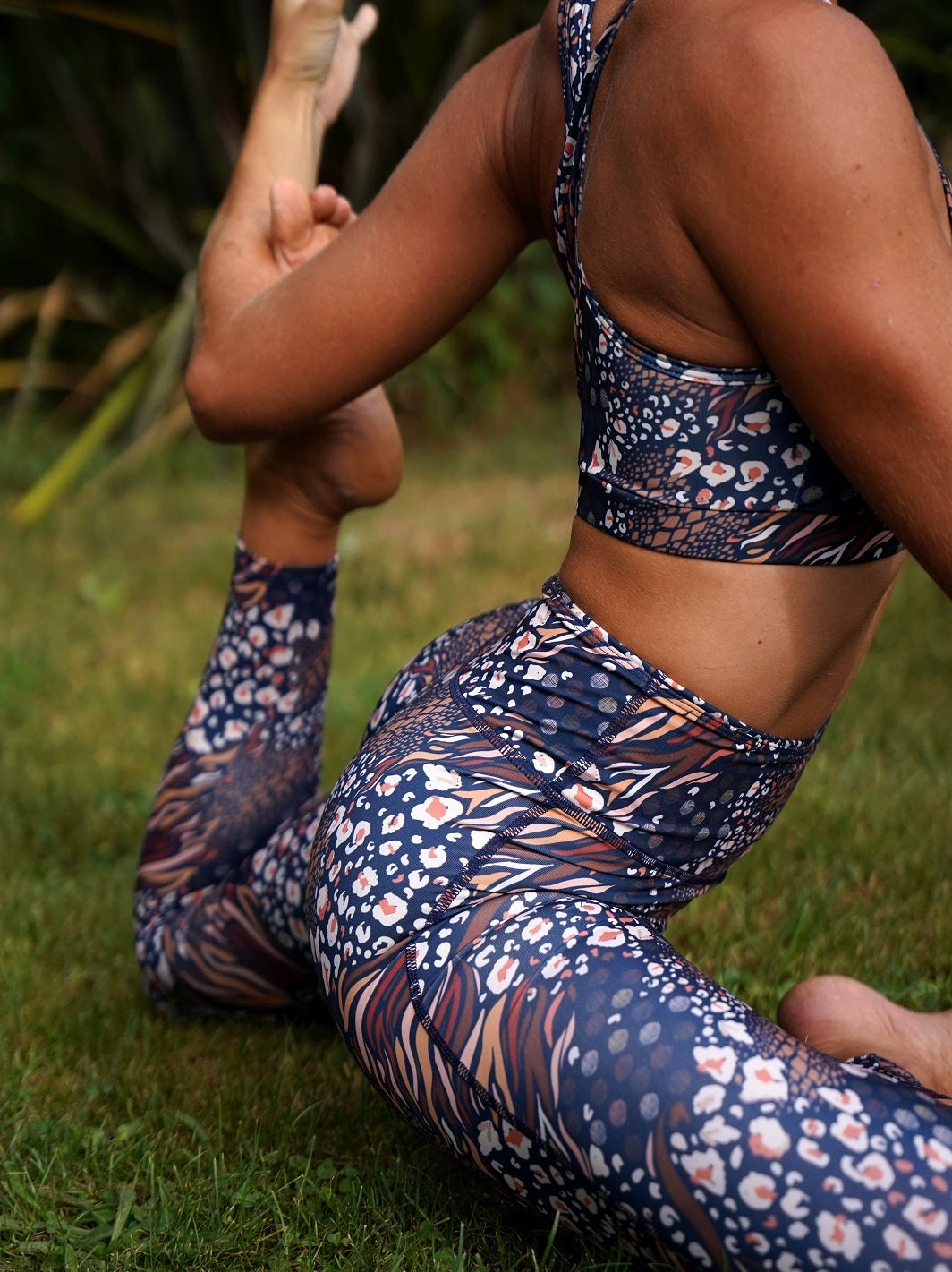Hello Yoginis!
Today, I am tackling a major subject: the plastic microfibers found in the water of our rivers and oceans.
A saddening and complex subject that I couldn't wait to tackle.
Géopélie clothing is partly made of recycled polyester and the biggest criticism we can make of this material is that it releases plastic microfibers when washing, which are found at the bottom of the oceans.
I will immediately give you the end of the story even if reading the demonstration is worth it: all, but really all, textile fibers release microfibers into the oceans and 80% of them are not of plastic but cellulosic origin (cotton, linen, viscose, etc.).
As long as there is no law drastically limiting the use of plastics, we are convinced that recycling plastic bottles and textile waste will remain the most eco-responsible thing for the planet.
When I created Géopélie, I had the idea of products that were the most successful from an environmental point of view . And in a way that’s what I did.
Made in France combined with the use of recycled fibers from textile and plastic waste at a minimum of 70% of the composition, this is already a great objective.
But here it is, eco-design is a matter of compromise.
Because whatever the materials selected, producing means polluting.
A large part of Géopélie clothing is made from recycled polyester.
It's a completely conscious choice because for sports clothing, I find synthetic materials more pleasant (they deform less, they dry more quickly, they are more shaping).
And then it’s a way of reusing our waste in a circular economy.

Lots of advantages in itself in recycled polyester but also a big flaw: when it goes through the washing machine, it releases plastic microfibers.
AIE Aie Aie …
I don't know about you, but when a question bothers me, I need to dig deep into the subject. The truth is rarely black or white.
I therefore give you here the fruit of my research.
First of all, what is microfiber?
It's a very small piece of fabric that comes off the garment when it goes through the washing machine and that the machine cannot filter. Arriving at the treatment plant, some of the microfibers are retained but the rest still ends up in the water.

Not to be confused with micro plastics which are fragments of macro waste washed up in the sea.
Very often, the spotlight is placed on synthetic microfibers.
The bad news is that all, absolutely ALL textile fibers are affected by this problem, as evidenced by the study conducted in 2018 by Anna Sanchez-Vidal in the seas of southern Europe.
80% of microfibers found at the bottom of the oceans are of cellulosic origin (cotton, linen).
13% are polyester microfibers.
And 1% is polyamide.
A similar study carried out in the United Kingdom, but this time in fresh water (River Trent), produced the same results.
As part of the Ocean Wise “Me, My Clothes and the Ocean” study, 38 different types of fabrics were combed through (or rather in the washing machine) to test their wear properties.
Depending on their thickness, the type of weaving, the mechanical or chemical treatment they have undergone, textile fibers do not wear in the same way and release more or less microparticles.

As a general rule, thicker fabrics lose more microfibers and the loss occurs mainly during the first three washes (without disappearing afterwards, it is simply less significant).
The result which of course struck me was to see that natural fibers release as many microfibers as polyester (164mg/kg compared to 161mg/kg).
Okay, great, and now what do we do?
Should we become a full-time nudist?

Do we never wash our clothes again?
What I really liked about the Ocean Wise study was that there was an entire page dedicated to proposing solutions.
I am sharing them with you here, because I am sure that you too would like to do your best when it comes to the environment.
- Does your garment really need to be washed right now? It might be able to be worn another day.
- Invest in good quality clothing that will last a long time
- If possible, use a front-loading washing machine and wash your laundry at 30°C as much as possible depending on the degree of soiling.
- Install a filter on your water outlet to minimize the passage of microfibers. Happy harvest!

You tell me, what about the guppy friend wash bag in all this?
I don't really know what to tell you, I'm not convinced but there is no study (yet) to support my argument.
I don't have the impression that it is really "a friend of fish".
The guppy friend is made of polyamide, a synthetic fiber from petrochemicals.
As we saw above, we find “only” 1% of polyamide in the ocean floor and yes, when it is used, it does indeed retain microparticles.
What disturbs me :
Do we really need to produce new plastic to retain the old?
Do we really need to buy guppy friends of all sizes for all our laundry when a filter on the water outlet would have the same effect?
And the 1%, is it because polyamide “peels” less when washed or simply because few clothes are made from this material compared to cotton, linen, polyester and others?
Glad to have your opinion on the subject, don't hesitate to fill the comments section ;-)
Discover here our eco-responsible yoga outfits made in France from recycled materials, perfectly suited to practicing all types of yoga!
And so as not to miss any news from Géopélie, subscribe to our newsletter here at the bottom of the page 👇 we only send a maximum of two per month!
Photo credits :
- Annie Spratt
- Ben o Bro
- Dan Gold
- Nareeta Martin
- Sebastian Herrmann
- Dainis Graveris
Sources:





Leave a comment